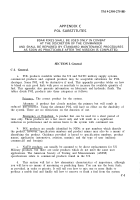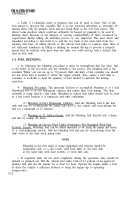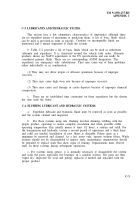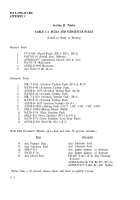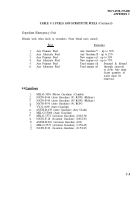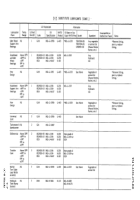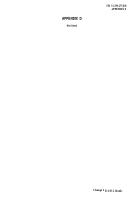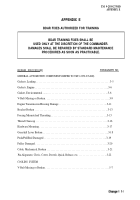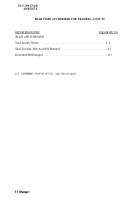TM-9-2350-275-BD - Page 205 of 223
TM 9-2350-275-BD
APPENDIX C
C-3. LUBRICANTS AND HYDRAULIC FLUIDS.
This section lists a few elementary characteristics of importance although there
are no expedient means of measuring or predicting them. A list of basic fluids which
can be used is provided in order or priority.
Cautions on incompatible fluids are
mentioned and a means suggested to flush the system.
b. Table C-2 provides a list of basic fluids which can be used as substitutes
(alternate and expedient). It is structured around the vehicle lube order. Alternate
products shown are NATO equivalents to the US specifications and can really be
considered primary fluids. There are no corresponding ASTM designators. The
expedients are emergency only substitutions. They may cause one of three problems
either individually or in combination.
(1) They may not allow proper or efficient operations because of improper
viscosity.
(2) They may cause high wear rate because of improper viscosity.
(3) They may cause seal damage or create deposits because of improper chemical
composition.
c.
There are no established time constraints on these expedients but the shorter
the time used the better.
C-4. FLUSHING LUBRICANT AND HYDRAULIC SYSTEMS.
a.
Expedient lubricant and hydraulic fluids must be removed as soon as possible,
and the system cleaned and inspected.
b.
For those systems using oils, flushing involves draining, refilling with the
proper product, operating to insure complete circulation and when possible stable
operating temperature (this usually means at least 1/2 hour), a redrain and refill. For
the transmission and hydraulic system a second period of operations and a third drain
and refill are needed. Installation of new filters is desirable. Filters must as a
minimum be removed and cleaned. As a last resort only, operate without filters. While
systems should not be disassembled to inspect seals, maintenance organizations should
be prepared to replace seals that show signs of leaking. Organizations must observe
seals on these systems during subsequent operations.
c. For systems using grease, it is normally necessary to disassemble the system
and wash the parts, especially the bearings, in a suitable solvent. The parts are then
wiped dry, inspected for wear and pitting, replaced if needed and repacked with the
proper product.
C-3
Back to Top









